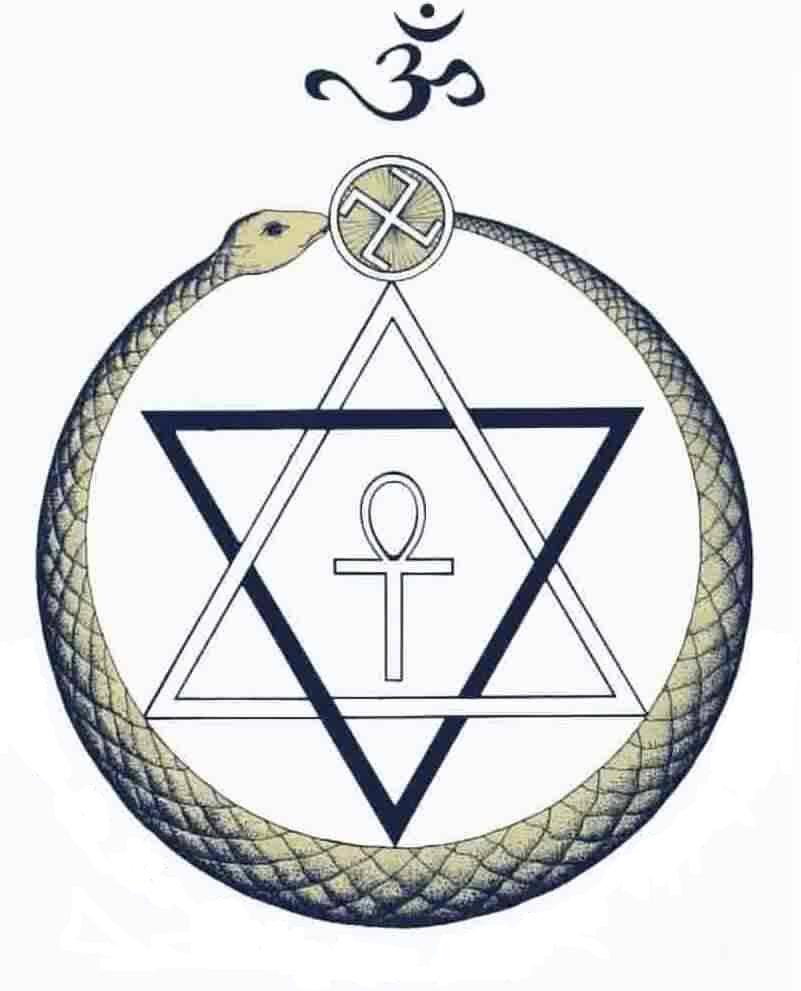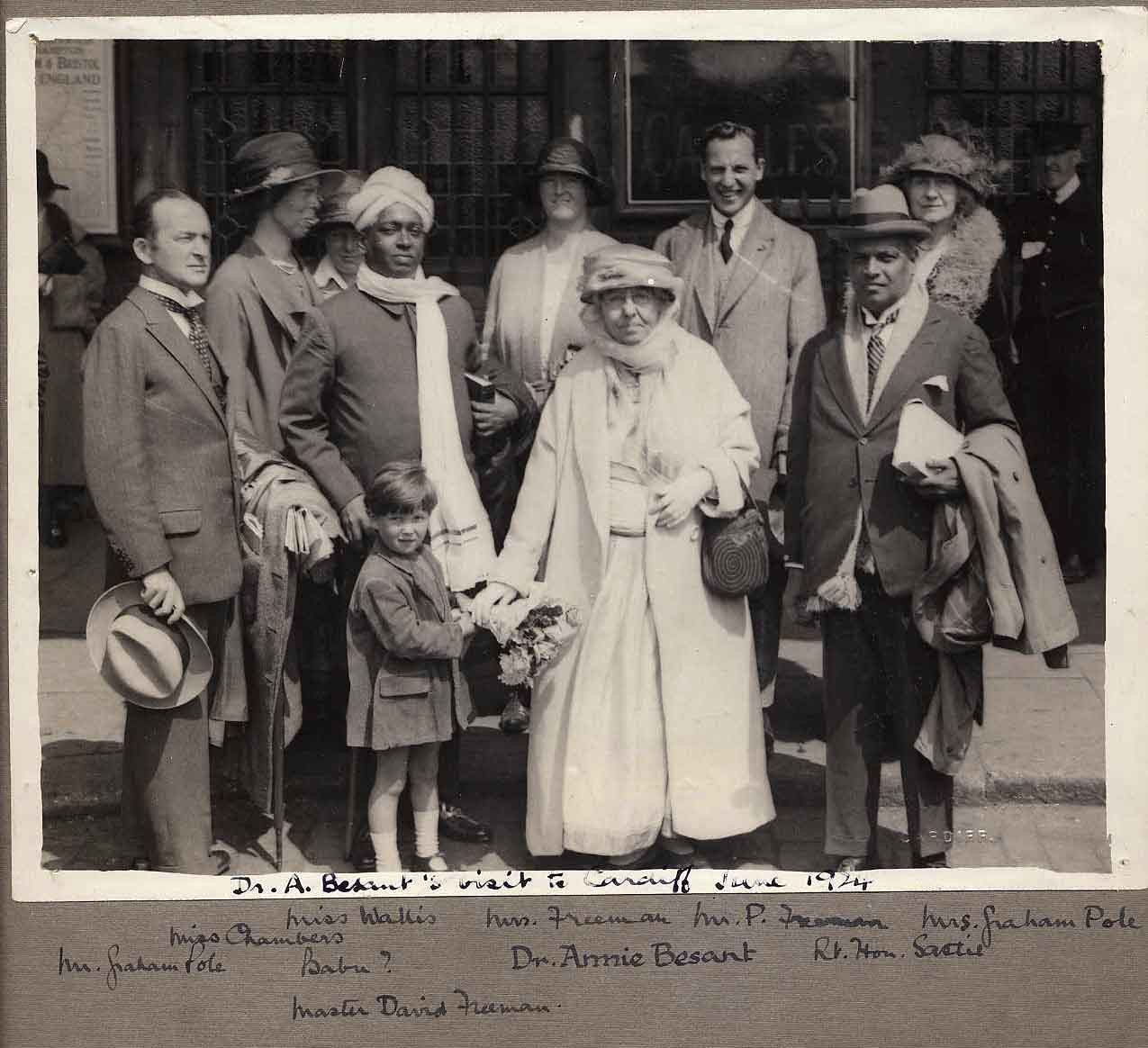
When we come to look at the teaching from the outside - I will take the inside presently - we find certain canonical Scriptures, as we call them, analogous to the Pitakas of the Buddhists, forty-five in number; they are the Siddhānta, and they were collected by Bhadrabāka, and reduced to writing, between the third and fourth centuries before Christ. Before that, as was common in India, they were handed down from mouth to mouth with that wonderful accuracy of memory which has ever been characteristic of the transmission of Indian Scriptures. Three or four hundred years before the reputed birth of Christ, they were put into writing, reduced, the western world would say, to a fixed form. But we know well enough it was no more fixed than in the faithful memories of the pupils who took them from the Teacher; and even now as Max Müller tells us, if every Veda were lost they could be textually reproduced by those who learn to repeat them. So the Scriptures, the Siddhānta, remained written, collected by Bhadrabāka, at this period before Christ. In A.D. 54 a council was held, the Council of Valabhi, where a recension of these Scriptures was made, under Devard-digamin, the Buddhaghosha of the Jainas. There are forty-five books, as I said; 11 Angas, 12 Upāngas, 10 Pakinnakas, 6 Chedas, 4 Mūla-sūtras, and 2 other Sūtras. This makes the canon of the Jaina religion, the authoritative Scripture of the faith. There seem to have been older works than these, which have been entirely lost, which are spoken of as the Pūrvas, but of these, it is said, nothing is known. I do not think that that is necessarily true. The Jainas are peculiarly secretive as to their sacred books, and there are masterpieces of literature, among the sect of Digambaras, which are entirely withheld from publication; and I shall not be surprised if in the years to come many of these books, which are supposed to be entirely lost, should be brought out, when the Digambaras have learnt that, save in special cases, it is well to spread abroad truths, that men may have them. Secretiveness may be carried so far as to be a vice, beyond the bounds of discretion, beyond the bounds of wisdom.
Then outside the canonical Scriptures there is an enormous literature of Purānas and Itihāsas, resembling very much the Purānas and Itihāsas of the Hindus. They are said, I know not whether truly or not, to be more systematized than the Hindu versions; what is clear is that in many of the stories there are variations, and it would be an interesting task to compare these side by side, and to trace out these variations, and to try and find the reasons that have caused them.
So much for what we may call their special literature; but when we have run over that, we find that we are still faced by a vast mass of books, which, although originating in the Jaina community, have become the common property of all India - grammars, lexicons, books on rhetoric and on medicine - these are to be found in immense numbers and have been adopted wholesale in India. The well-known Amarakosha, for instance, is a Jaina work that every student of Sanskrit learns from beginning to end.
I said the Jainas came to Southern India - spreading downwards through the whole of the southern part of the peninsula; we find them giving kings to Madura, to Trichinopoly and to many another city in Southern India. We find not only that they thus give rulers; but we find they are the founders of Tamil literature. The Tamil grammar, said to be the most scientific grammar that exists, is a Jaina production. The popular grammar, Nāmal, by Pavanandi, is Jaina, as is Nāladiyār. The famous poet Tiruvalluvar's Kural, known I suppose to every Southerner, is said to be a Jaina work, for this reason, that the terms he uses are Jaina terms. He speaks of the Arhats; he uses the technical terms of the Jaina religion, and so he is regarded as belonging to the Jaina faith.
The same is true of the Canarese literature; and it is said that from the first century of the Christian Era to the twelfth, the whole literature of Canara is dominated by the Jainas. So great then were they in those days.
International President of the Theosophical Society, Annie Besant arrives at Cardiff Central Station in June 1924 and is met by Cardiff Theosophists. Dr Besant is presented with a bouquet of flowers and a railway official (far right) seems to be enjoying the event. Photo by Theosophy Cardiff
Then there came a great movement throughout Southern India, in which the followers of Mahādeva, Siva, came preaching and singing through the country, appealing to that deep emotion of the human heart, Bhakti, which the Jaina had too much ignored. Singing stotras to Mahādeva they came, chanting His praises, especially working cures of diseases in His name, and before these wonderful cures and the rush of the devotion which was aroused by their singing and preaching, many of the Jainas were themselves converted; the remainder of them were driven away, so that in Southern India they became practically non-existent. Such is their story in the South; such the fashion of their vanishing.
In Rajputana, however, they remained, and so highly were they respected that Akbar, the magnanimous Musalmān emperor, issued an edict that no animals, should be killed in the neighbourhood of Jaina temples.
The Jainas are divided, we may add, into two great sects - the Digambaras, known in the fourth century B.C., and mentioned in one of Asoka's edicts; the Svetambaras, apparently more modern. The latter are now by far the more numerous, but it is said that the Digambaras possess far vaster libraries of ancient literature than does the rival sect.
Leave that historical side; let us now turn to their philosophic teaching. They assert two fundamental existences, the root, the origin, of all that is, of Samsāra; these are uncreated, eternal. One is Jīva or Atma, pure consciousness, knowledge, the Knower, and when the Jīva has transcended Avidyā, ignorance, then he realizes himself as the pure knowledge that he is by nature, and is manifested as the Knower of all that is. On the other hand Dravya, substance, that which is knowable; the Knower and the Knowable opposed one to the other; Jīva and Dravya. But Dravya is to be thought of as always connected with Guna, quality. Familiar enough, of course, are all these ideas to you, but we must follow them one by one. With Dravya is not only Guna, quality, but Paryāya, modification.
“Substance is the substrate of qualities; the qualities are inherent in one substance; but the characteristic of developments is that they inhere in either.”
“Dharma, Adharma, space, time, matter and souls (are the six kinds of substances), they make up this world, as has been taught by the Jinas who possess the best knowledge.”
[Uttaradhyayana, xxviii, 6, 7. Translated from the Prakrit, by Hermann Jacobi]
Here you have the basis of all Samsara; the Knower and the Knowable, Jīva and Dravya with its qualities and its modifications. This makes up all. Out of these principles many deductions, into which we have not the time to go; I may give you, perhaps, one, taken from a Gātha of Kundācārya, which will show you a line of thought not unfamiliar to the Hindu. Of everything, they say, you can declare that it is, that it is not, that it is and is not. I take their own example, the familiar jar. If you think of the jar as Paryāya, modification, then before that jar is produced, you will say: “Syānnāsti” it is not. But if you think of it as substance, as Dravya, then it is always existing, and you will say of it: “Syādasti”, it is; but you can say of it as Dravya and Paryāya, it is not and it is, and sum up the whole of it in a single phrase: “Syādasti nāsti”; it is and it is not.[Report of the Search for Sanskrit MSS BY Dr Bhandarkar, p 95] Familiar line of reasoning enough. We can find dozens, scores and hundreds of illustrations of this way of looking at the universe, wearisome, perhaps, to the ordinary man, but illuminative and necessary to the metaphysician and the philosopher.
Then we come to the growth, or rather the unfolding, of the Jīva. The Jīva evolves, it is taught, by Reincarnation and by Karma; still, as you see, we are on very familiar ground.
“The universe is peopled by manifold creatures who are in this Samsāra, born in different families and castes for having done various actions. Sometimes they go to the worlds of the Gods, sometimes to the hells, sometimes they become Asuras, in accordance with their actions. Thus living beings of sinful actions who are born again and again in ever-recurring births, are not disgusted with Samsāra.” [Uttaradhyayana, iii, 2, 3, 5]
And it teaches exactly as you read in the Bhagavad-Gītā that the human being goes downwards by evil action; by mixed good and evil he will be born as a man; or, if purified, will be born as a Deva. Exactly on these lines the Jaina teaches. It is by many births, by innumerable experiences, the Jīva begins to liberate himself from the bonds of action. We are told that there are three jewels, like the three ratnas that we so often hear of among the Buddhists; and these are said to be right knowledge, right faith, right conduct, a fourth being added for ascetics:
“Learn the true road leading to final deliverance, which the Jinas have taught; it depends on four causes, and is characterized by right knowledge and faith. I. Right knowledge; II. Faith; III. Conduct; IV. Austerities. This is the road taught by the Jinas who possess the best knowledge.” [Ibid, xxviii, 1, 2]
By right knowledge and right faith and right conduct the Jīva evolves, and in the later stages, to these are added austerities, by which he finally frees himself from the bonds of rebirth. Right knowledge is defined as being that which I have just said to you with regard to Samsāra; and the difference of Jīva and Dravya, and the six kinds of substances, Dharma, Adharma, space, time, matter, soul; he must also know the nine truths: Jiva, soul; Ajīva, the inanimate things; Bandha, the binding of the soul by karma; Punya, merit; Pāpa, demerit; Āsrāva, that which causes the soul to be affected by sins; Samvara, the prevention of Āsrāva by watchfulness; the annihilation of Karma; final deliverance; these are the nine truths [Uttaradhyayana, xxviii, 14].
Then we find a definition as to right conduct. Right conduct, which is Sarāga, with desire, leads to Svarga - or it leads to becoming a Deva, or it leads to the sovereignty of the Devas, Asuras and men, but not to liberation. But the right conduct which is Vītarāga, free from desire, that, and that alone, will lead to final liberation. As we still follow the course of the Jīva, we find him throwing aside Moha, delusion, Rāga, desire, Dvesha, hatred, and of course their opposites, for the one cannot be thrown off without the other; until at last he becomes the Jīva complete and perfect, purified from all evil, omniscient, omnipotent and omnipresent, the whole universe reflected in himself as in a mirror, pure consciousness, “with the powers of the senses, though without the senses”; pure consciousness, the knower, the Supreme.
Such then is a brief outline of the views, the philosophic views, of the Jainas, acceptable surely to every Hindu, for on almost every point you will find practically the same idea, though put sometimes in a somewhat different form.
 Annie Besant
Annie Besant
